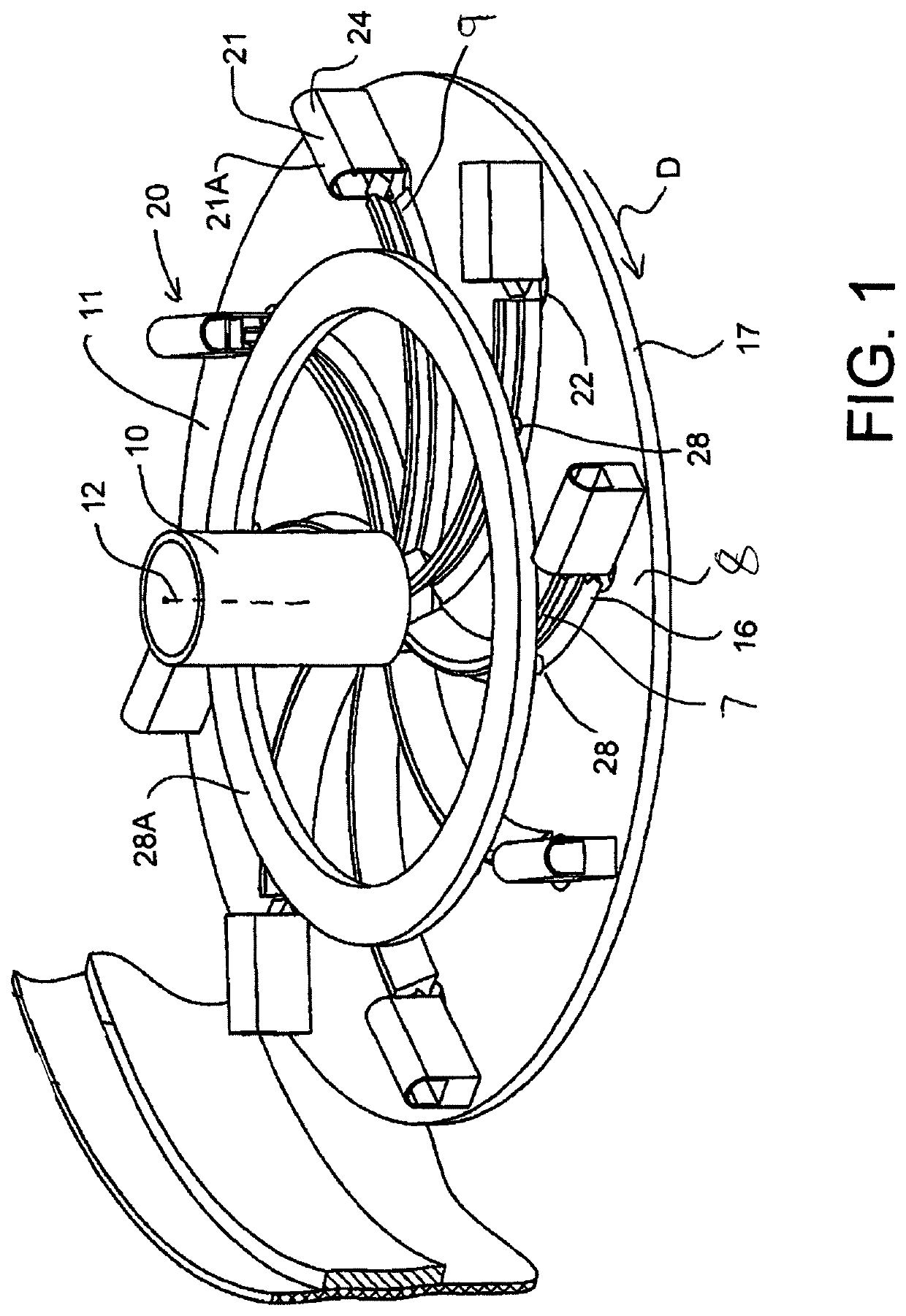High efficiency multiplexing
a multi-spectroscopy, high-efficiency technology, applied in the direction of fluorescence/phosphorescence, optical radiation measurement, wave/particle radiation conversion of sensor output, etc., can solve the problems of reducing the duty cycle of micromirror based designs, affecting the efficiency of multi-spectroscopy, and unable to meet the requirements of the application. , to achieve the effect of mechanical robustness and reducing the number of parameters
- Summary
- Abstract
- Description
- Claims
- Application Information
AI Technical Summary
Benefits of technology
Problems solved by technology
Method used
Image
Examples
Embodiment Construction
[0196]An apparatus for sorting particles based on a measurable parameter of the particles shown in FIGS. 1 and 2 comprises a supply conduit 10 carrying particles to be sorted from a feed supply 10A which supplies the particles in a continuous stream for presentation through the conduit to a rotary body 11 rotatable around an axis 12. In the embodiment shown the rotary body is a flat disk with the axis 12 arranged vertical so that the disk provides an upper horizontal surface onto which the particles 13 are supplied in the stream from the conduit 10. The conduit is arranged at the center of the disk so that the particles are deposited onto the center of the position where the disk is rotating but where there is little outward velocity. In an exemplary case, the particles may be grain kernels. The kernel velocity at this point is from the flow in the supply conduit 10. The velocity at a point on the disk is v=wr where w is the angular velocity and r is the radius. If kernels are depos...
PUM
| Property | Measurement | Unit |
|---|---|---|
| time | aaaaa | aaaaa |
| wavelength | aaaaa | aaaaa |
| phase | aaaaa | aaaaa |
Abstract
Description
Claims
Application Information
 Login to View More
Login to View More - R&D
- Intellectual Property
- Life Sciences
- Materials
- Tech Scout
- Unparalleled Data Quality
- Higher Quality Content
- 60% Fewer Hallucinations
Browse by: Latest US Patents, China's latest patents, Technical Efficacy Thesaurus, Application Domain, Technology Topic, Popular Technical Reports.
© 2025 PatSnap. All rights reserved.Legal|Privacy policy|Modern Slavery Act Transparency Statement|Sitemap|About US| Contact US: help@patsnap.com



